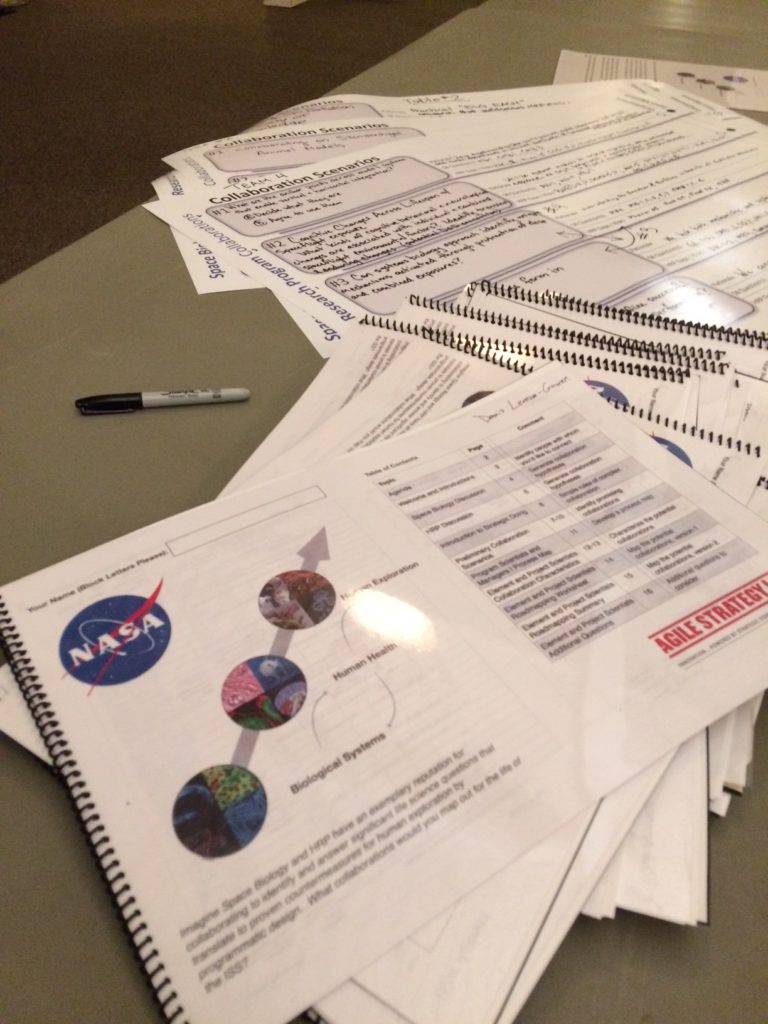Designing complex workshops using simple rules: NASA Life Sciences
The discipline of agile strategy is designed for open, loosely connected networks. These networks do not stand still. They are complex and shifting. How do we design and guide collaborations in the midst of this complexity? In a seminal Harvard Business Review article some years ago, Kathleen Eisenhardt and Donald Sull provided the answer: follow simple rules.
For the past 10 years at Purdue, we have been evaluating and testing the rules that form the basis of complex collaboration. Strategic Doing, the protocol that we have incubated, outlines 10 rules to follow.

This week, we are using these rules to design a complex workshop for NASA Life Sciences. Here’s the challenge: how do we design a more productive framework for translational research between basic and applied space life sciences? Two NASA units are involved. Space Biology conducts basic research. The Human Research Program conducts applied research focused on reducing the risks of human exploration of space.
If you follow the linear model of basic research leading to applied research leading to demonstration, you frame the issue as removing barriers to a pipeline. However, if you think of the challenge as building collaborations that strengthen both basic and applied research, you develop a different model. In a recent book, The New ABC’s of Research, Ben Shneiderman outlines how the linear model of research is inherently self-limiting. He advocates developing teams that combine basic and applied research.
We are building complex collaborations with a sophisticated workshop design. You can see the Agile Strategy Lab Book that we developed for NASA Life Sciences here. We will be reporting on our progress.

The Founder of the Lab at UNA and co-author of Strategic Doing: 10 Skills for Agile Leadership, Ed’s work has focused on developing new models of strategy specifically designed to accelerate complex collaboration in networks and open innovation. He is the original developer of Strategic Doing.
